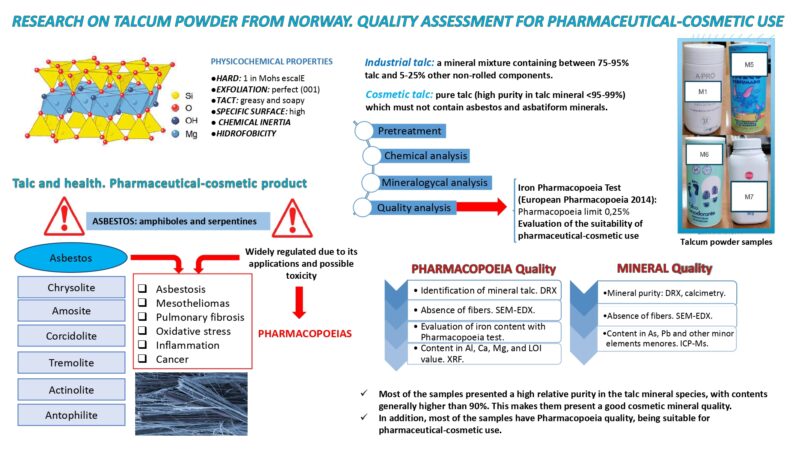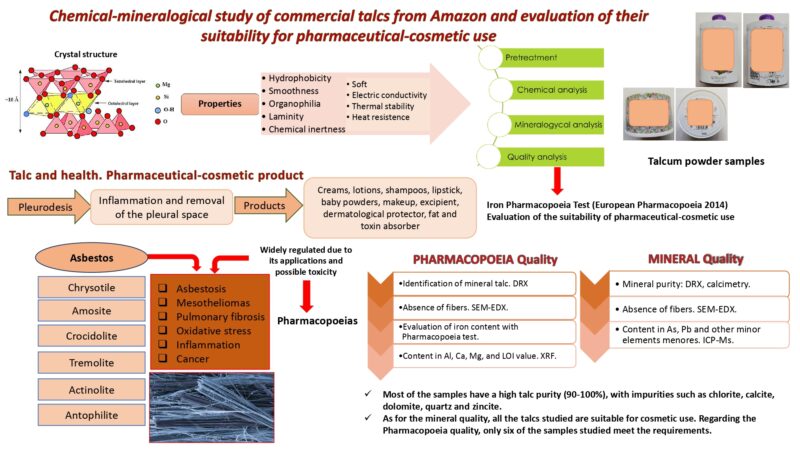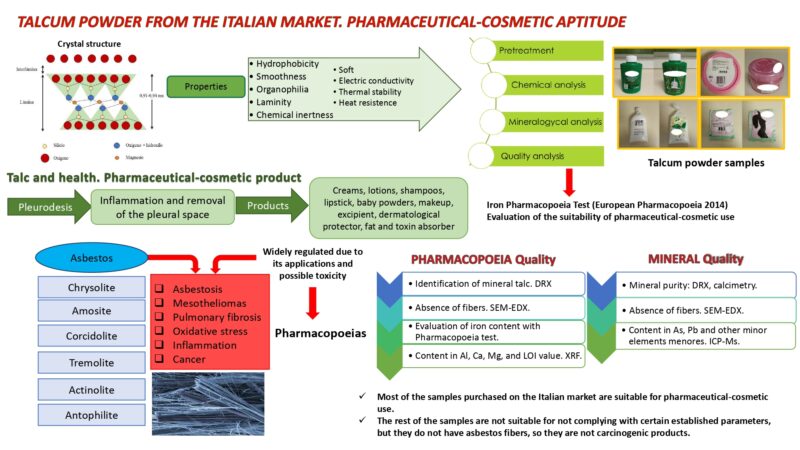
Talc is a mineral species belonging to the Phyllosilicates (class of Silicates). It is a hydrated magnesium silicate, formed naturally by the alteration of other minerals. This means that talcum powder may be composed of additional minerals other than talc (chlorites, carbonates, quartz, amphiboles, among others).
The characteristics of talc make it a unique raw material with a wide variety of applications in different industrial sectors, including the pharmaceutical-cosmetic sector.
Samples of talcum powder were studied and their quality for pharmaceutical-cosmetic use was evaluated using the standards of the European Pharmacopoeia and different advanced complementary methods such as: XRF, DRX, ICP-masses, SEM-EDX, calcimetry and atomic absorption.
Most of the samples presented high relative purity in the mineral species talc, with a content of over 90% in most cases. This indicates good mineral quality for cosmetic use. Most of the samples also have good Pharmacopoeia quality and are therefore suitable for pharmaceutical-cosmetic use.
Keywords: Talc; European Pharmacopoeia; Mineral quality; Pharmaceutical-Cosmetic Use; Impurities.
Directed by: María Virginia Fernández González

